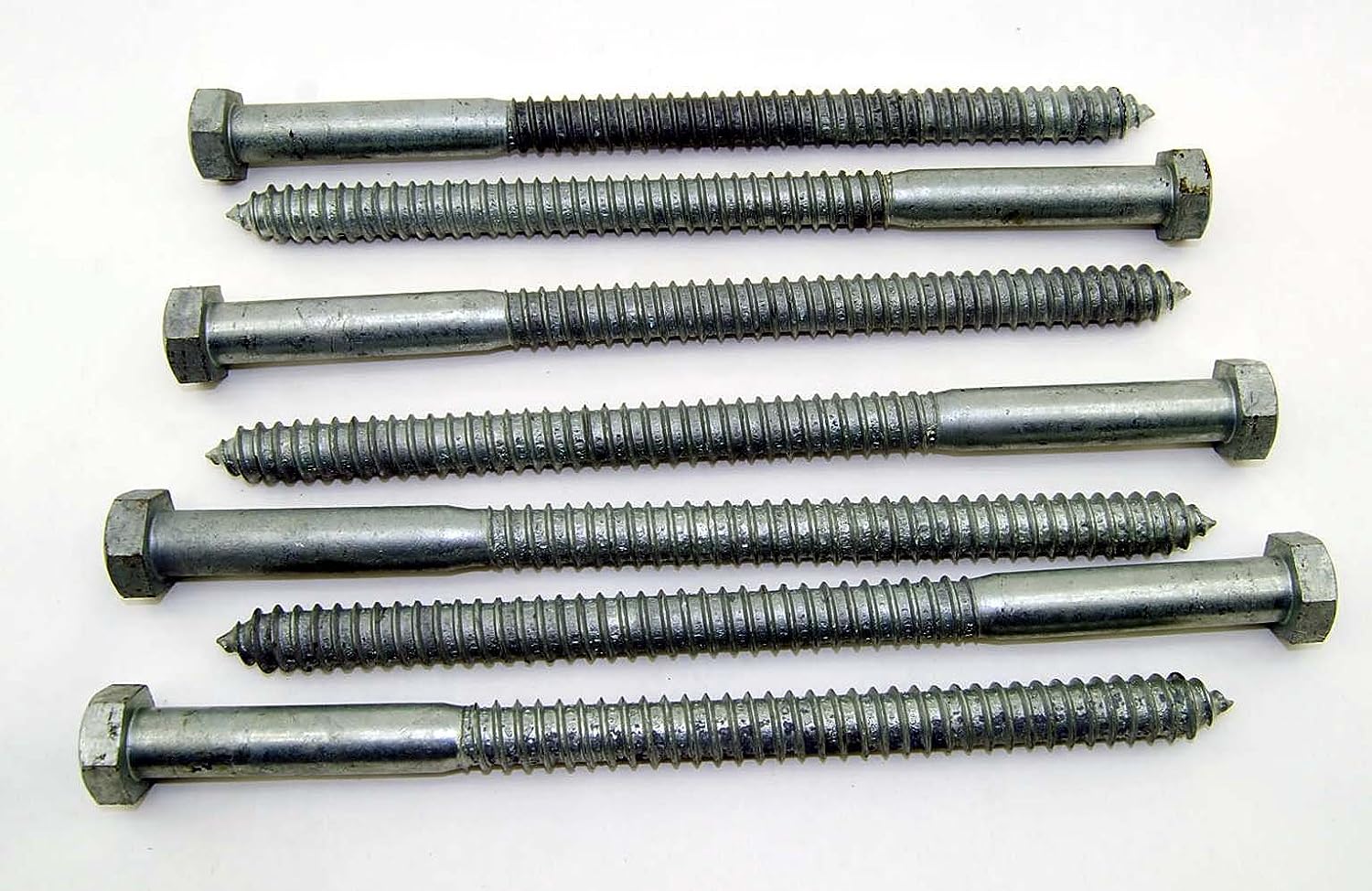Installing lag screws requires careful planning and execution. To ensure they’re seated properly, it’s important to pre-drill and use the right sized drill bit for each screw.
To prevent splitting wood studs and snapping the bolt head when torque is applied, proper pilot hole size is critical. The following chart provides a quick reference for the ideal pilot hole size for each lag bolt diameter.
Threaded Section
Lag bolts are much stronger than standard wood screws because they’re made from hard metal and have a larger head. They also feature hex threads that are pitched, twisted, and cut even deeper than those found on standard screw heads so they compress and pull together two pieces of wood more securely.
It’s important to pre-drill holes for lag bolts. This makes it easier to install the bolts and ensures they don’t come loose over time. Using a drill bit that’s the same size or slightly smaller than the lag bolt root diameter will help you create the pilot holes. It’s also recommended to lubricate the bolts before installing them. A variety of lubricants are available, including beeswax, paraffin wax, and bar soap.
Depending on the type of materials you’re attaching, you may need to drill more than one hole. It’s a good idea to have a drill with a socket attachment and a ratcheting socket wrench on hand so you can tighten the lag bolts once they’re installed. You’ll also need clamps to keep the materials together while you’re drilling the holes. The lag bolts should be long enough to penetrate the attached materials and go another 2 inches into whatever they’re attached to in concrete applications.
Unthreaded Body
Lag bolts, also called lag screws, are used to fasten wood together. They are very strong and can withstand heavy loads, but they must be properly installed to ensure they hold.
The length of a lag screw is determined by the depth it should penetrate into the material being secured. It’s important to consult a professional and/or review local building codes when determining the proper length for a particular project.
Like wood screws, lag screws should be driven into place using a socket wrench. It is a good practice to use washers to distribute the load over a larger surface area and to prevent damage to the screw.
For the unthreaded section of the shank, a stepped pilot hole is recommended. The pilot hole size should be a match for the bolt’s minor diameter, and should vary depending on wood type. Consult a chart such as the table of Species Groups for Sawn Lumber to find out what size is appropriate for each wood type.
Lag bolts are available in a wide range of sizes, from 1 inch to 7/8 inches. They are typically made of steel or stainless steel, but may be manufactured from other materials, as well. A hex head is typically provided on domestic product, while a semi-cone point may be supplied on imported products.
Unthreaded Shank
As the name suggests, lag bolts (also known as lag screws) have an unthreaded shank. Lag screws are used to join two materials together, with the hex head serving as an anchor and the threaded portion of the screw providing friction. They can withstand significant shear loads, and are generally much stronger than a standard bolt or screw.
When installing lag screws, it is important that you pre-drill a pilot hole in the material in which they will be installed. Use a bit with a slightly smaller diameter than the lag screw’s shank, and make sure that the hole goes all the way through the region in which the screw will be situated. Drilling a hole that is too large may cause the bolt to break when being driven in, as it can create stress along the length of the bolt.
The pilot hole size varies depending on the species of wood, so some experimentation may be necessary for your project. However, for general purposes, a pilot hole should be the size of the screw’s minor diameter for softwoods and slightly larger for hardwoods. For reference, see table 1 for a chart that lists head width across flats and corners, head height, and a listing of the number of threads per inch for various sized lag bolts.pilot hole for 3/8 lag screw

